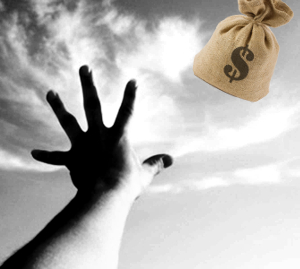GST hike alone will hit the poor more
 New research has found the winners and losers in the push to raise the GST, and unsurprisingly, the poor do not come out on top.
New research has found the winners and losers in the push to raise the GST, and unsurprisingly, the poor do not come out on top.
In a study that could make the Federal Government’s task of convincing Senate crossbenchers to back a higher GST more difficult, the Australian Council of Social Service (ACOSS) has commissioned modelling of what would happen under a number of scenarios.
The modelling by the renowned National Centre for Social and Economic Modelling (NATSEM) found that the current 10 per cent GST consumes 13.4 per cent of disposable income for those in the bottom fifth of households.
But if the rate were lifted to 15 per cent, that slice would rise to more than 20 per cent of disposable income for the poorest household.
Under the 15 per cent plan, NATSEM found households in the top 20 per cent would see their disposable income rise from a mere 5.9 per cent to 8.8 per cent.
There is an alternative idea - retaining the 10 per cent rate but broadening its base to include fresh food, water and sewerage, health, and education – which the study found would be almost as regressive, consuming 18 per cent of disposable funds for the lowest fifth.
Offsetting the tax grab with a cut to marginal income tax would just make the disparity between rich and poor worse.
The modelling shows that if the extra revenue from lifting the GST to 15 per cent paid for a cut in personal income tax rates of 5 per cent, the lowest 60 per cent of households would be worse off while the top 40 per cent gained at their expense.
NATSEM modelling of the Abbott Government’s first budget provided the meat behind arguments that saw many of its cuts and reforms fail, while their latest research has already been picked up by the federal opposition in the brewing battle for the next election.
Federal Labor is said to be preparing a major anti-GST campaign which will argue that trying to get more from the consumption tax would be strike a deep blow to household budgets, spending confidence, for the sake of a “great big new tax on everything”
But opinion is divided even amongst Labor figures, with former Labor premiers, Kristina Keneally (NSW), Peter Beattie (QLD), and Geoff Gallop (WA) telling reporters they might support an increase to the GST if it comes with compensation for low-income earners, federation reform, additional money for health and education, and other conditions.
Prime Minister Malcolm Turnbull is keeping all ideas on the table ahead of an upcoming white paper on tax, but maintains that any changes would include caveats to preserve fairness.
Cassandra Goldie from ACOSS said lifting the GST could in theory be a part of broader tax reform, but it should not be a “starting point”, given that it slugs low- and middle-income earners the hardest.








 Print
Print